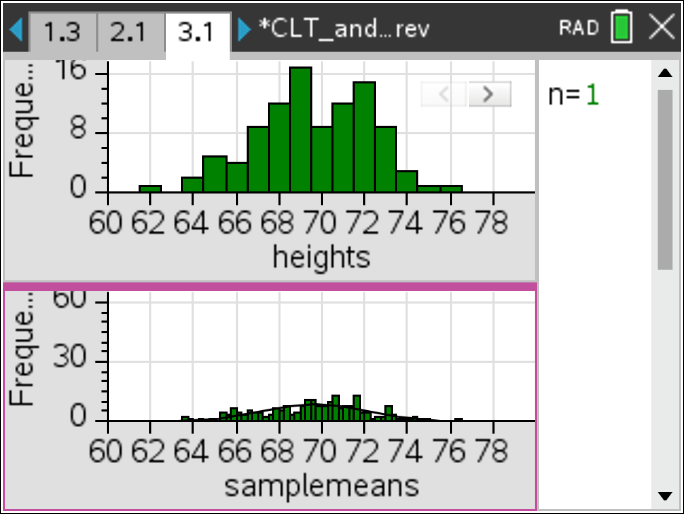Central Limit Theorem

TI-Nspire™ CX CAS
Central Limit Theorem
This lesson involves examining distributions of sample means of random samples of size n from four different populations.
- Students will recognize that when n is sufficiently large, the sampling distribution of sample means, x̄, is approximately normal, regardless of the shape of the population distribution (Central Limit Theorem).
- Students will recognize that when the population distribution is normal, the sampling distribution of sample means, x̄, is normal for any sample size n.
- Students will recognize the consequences of the Central Limit Theorem when applied to quantitative data: a normal model with μx̄ = μ (the true population mean) and that decreases as sample size, n, increases.
- Students will recognize the consequences of the Central Limit Theorem when applied to proportions: a normal model with μp̂ = P (the true population proportion) and σp̂ that decreases as sample size, n, increases.
This lesson involves examining distributions of sample means of random samples of size n from four different populations.
As a result, students will:
- Observe a uniform distribution and click to see simulated sampling distributions of size n=1 to 30 with a normal curve imposed on the distribution in each case.
- Consider the same questions with respect to a normal distribution, a skewed distribution and a proportion.
- Observe that as the sample size gets larger, the better the simulated sampling distribution can be approximated by a normal model.
TI-Nspire™ CX CAS
Vernier EasyData,Vernier EasyLink and Vernier EasyTemp are registered trademarks of Vernier Science Education.

